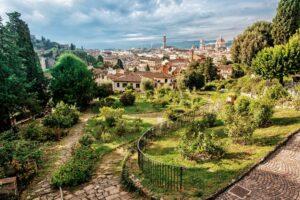Fodor's Expert Review Cappelle Medicee
This magnificent complex includes the Cappella dei Principi, the Medici chapel and mausoleum that was begun in 1605 and kept marble workers busy for several hundred years, and the Sagrestia Nuova (New Sacristy), designed by Michelangelo and so called to distinguish it from Brunelleschi's Sagrestia Vecchia (Old Sacristy) in San Lorenzo.
Michelangelo received the commission for the New Sacristy in 1520 from Cardinal Giulio de' Medici (1478–1534), who later became Pope Clement VII. The cardinal wanted a new burial chapel for his cousins Giuliano, Duke of Nemours (1478–1534), and Lorenzo, Duke of Urbino (1492–1519). He also wanted to honor his father, also named Giuliano, and his uncle, Lorenzo il Magnifico. The result was a tour de force of architecture and sculpture.
Architecturally, Michelangelo was as original and inventive here as ever, but it is, quite properly, the powerfully sculpted tombs that dominate the room. The scheme is allegorical: on the tomb on the right... READ MORE
This magnificent complex includes the Cappella dei Principi, the Medici chapel and mausoleum that was begun in 1605 and kept marble workers busy for several hundred years, and the Sagrestia Nuova (New Sacristy), designed by Michelangelo and so called to distinguish it from Brunelleschi's Sagrestia Vecchia (Old Sacristy) in San Lorenzo.
Michelangelo received the commission for the New Sacristy in 1520 from Cardinal Giulio de' Medici (1478–1534), who later became Pope Clement VII. The cardinal wanted a new burial chapel for his cousins Giuliano, Duke of Nemours (1478–1534), and Lorenzo, Duke of Urbino (1492–1519). He also wanted to honor his father, also named Giuliano, and his uncle, Lorenzo il Magnifico. The result was a tour de force of architecture and sculpture.
Architecturally, Michelangelo was as original and inventive here as ever, but it is, quite properly, the powerfully sculpted tombs that dominate the room. The scheme is allegorical: on the tomb on the right are figures representing Day and Night, and on the tomb to the left are figures representing Dawn and Dusk. Above them are idealized sculptures of the two men, usually interpreted to represent the active life and the contemplative life. But the allegorical meanings are secondary; what is most important is the intense presence of the sculptural figures and the force with which they hit the viewer.
READ LESS







